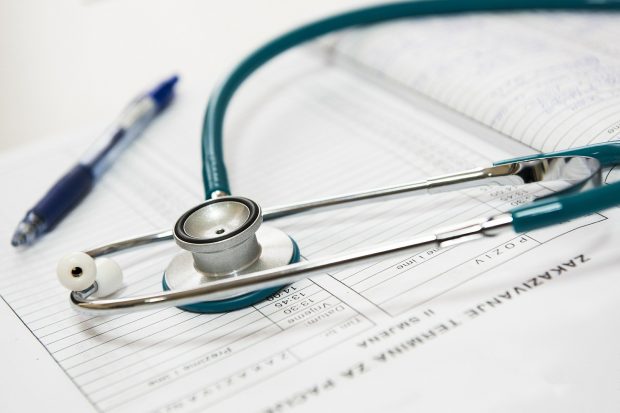Many marketing authorisation holders (MAHs) sponsor and run a wide variety of programmes that are often internally termed a ‘patient support programme’ (PSP) and we are often asked by industry about the expectations for the collection of safety data from these programmes.
The following definition of a PSP is included in GVP Module VI (Rev 2), section VI.C.2.2.11: “A patient support programme is an organised system where a marketing authorisation holder receives and collects information relating to the use of its medicinal products. Examples are post-authorisation patient support and disease management programmes, surveys of patients and healthcare professionals, information gathering on patient compliance, or compensation/re-imbursement schemes.”
In practice, some of the programmes that are internally termed ‘PSPs’ by an MAH might not actually meet the definition above.
Reports of suspected adverse reactions derived from organised data collection systems, including patient support programmes (as per the EU definition), are solicited reports[1],[2]. Under the EU guidelines, study (solicited) adverse events (AE) must be assessed by the company for possible relatedness to determine reporting requirements.
There is a risk that safety reports received spontaneously via a programme not based on organised data collection may not be correctly reported as adverse drug reactions.
Categorising safety data collection from PSPs for compliant safety reporting
Programmes termed as ‘PSPs’ could be categorised as follows:
- Programmes with organised data collection that include active solicitation of information relating to the use of a medicinal product:
- AE reports should be classified as solicited and should undergo a causality assessment.
- Programmes without active solicitation of information relating to the use of a medicinal product but with established mechanisms for reporting AEs:
- AE reports should be classified as solicited or spontaneous depending on the programme structure.
- Programmes without active solicitation of information relating to the use of a medicinal product but may have incidental reporting that occurs in the margins of the programme:
- AE reports should be classified as spontaneous and have implied causality.

When determining which category a programme falls into, MAHs should consider the following:
- Does the programme include organised data collection and utilise data collection tools?
- Does the programme structure involve the company reaching out to patients and/or healthcare professionals or is unsolicited communication received from these sources?
- Is there planned contact with patients and/or healthcare professionals or are there no planned interactions?
Implementing appropriate measures to collect reports of suspected adverse drug reactions
GVP Module VI (Rev 2), section VI.B.1. states: “Competent authorities and marketing authorisation holders should take appropriate measures to collect and collate all reports of suspected adverse reactions associated with medicinal products for human use originating from unsolicited or solicited sources.”
In practice ‘appropriate measures’ often includes:
- Contractual language with third parties regarding collection and forwarding of safety information.
- Training of company staff and third parties on pharmacovigilance concepts and use of data collection tools.
- Reconciliation of safety data (periodically or at the end of the programme).
- Quality assurance activities, including audit and source data verification.
The extent of the measures implemented to collect safety data should be proportionate to the likelihood that the programme will generate safety data. Aspects that can be taken into account when assessing the likelihood of a programme generating safety data include the following:
- Objective: Is the programme designed to collect information relating to the use of a medicinal product?
- Patient exposure: What is the planned duration of the programme? How many patients are likely to be enrolled?
- Nature of interaction: e.g. healthcare professional directly engaging with patients about their disease/ treatment, call centre handling enquiries related to the product and its usage, call centre handling drug delivery scheduling requests, delivery driver dropping off drug, etc.

For organised data collection programmes that are designed to solicit information relating to the use of a medicinal product and are more likely to collect safety data, it is expected that robust measures are implemented to collect and collate safety data. For example, appropriately detailed written procedures, training of relevant parties, appropriate contractual language, AE reporting forms, etc. In addition, for these programmes, MAHs should periodically measure the compliance of the system in place to ensure that AE reports are being reported to the company’s Pharmacovigilance department. For example, reconciliation of safety data between departments/parties, audit, source data verification, etc. The emphasis should be on the collection of high-quality data on the patient’s experience with the product and organised data collection tools should be designed to gather detailed information significant for the scientific evaluation of the cases.
For programmes that are not designed to solicit information relating to the use of a medicinal product and are deemed unlikely to generate safety data, it is considered appropriate to implement less stringent measures to collect AEs that are reported incidentally in the margins of the programme. For example, implementing an appropriate contractual agreement with third parties that includes AE reporting language.
If reports of a patient’s death are received by the MAH through a PSP, it is expected that the MAH follows up with the reporter to obtain further information about the clinical circumstances. As per the EU statutory guidance[3], a report is not valid for reporting if only an outcome (or consequence) is notified and no further information about the clinical circumstances is provided to consider it as a suspected adverse reaction. Medical judgement should always be applied in deciding whether the notified information is an adverse reaction or an event.
Conclusion
The structure of these programmes should be evaluated on an individual basis to determine if there is any organised data collection or if information is being solicited from patients or healthcare professionals. Additionally, MAHs should have a system in place to collect safety data and ensure that data from each PSP is handled consistently.
References
[1] ICH E2D Post-approval safety data management (CPMP/ICH/3945/03)
[2] Guideline on good pharmacovigilance practices (GVP) Module VI – Collection, management and submission of reports of suspected adverse reactions to medicinal products (Rev 2) (EMA/873138/2011); Section VI.B.1.2. Solicited reports
[3] Guideline on good pharmacovigilance practices (GVP) Module VI – Collection, management and submission of reports of suspected adverse reactions to medicinal products (Rev 2) (EMA/873138/2011); Section VI.B.2. Validation of reports
Don’t miss the next post, sign up to be notified by email when a new post is published on the Inspectorate blog.

